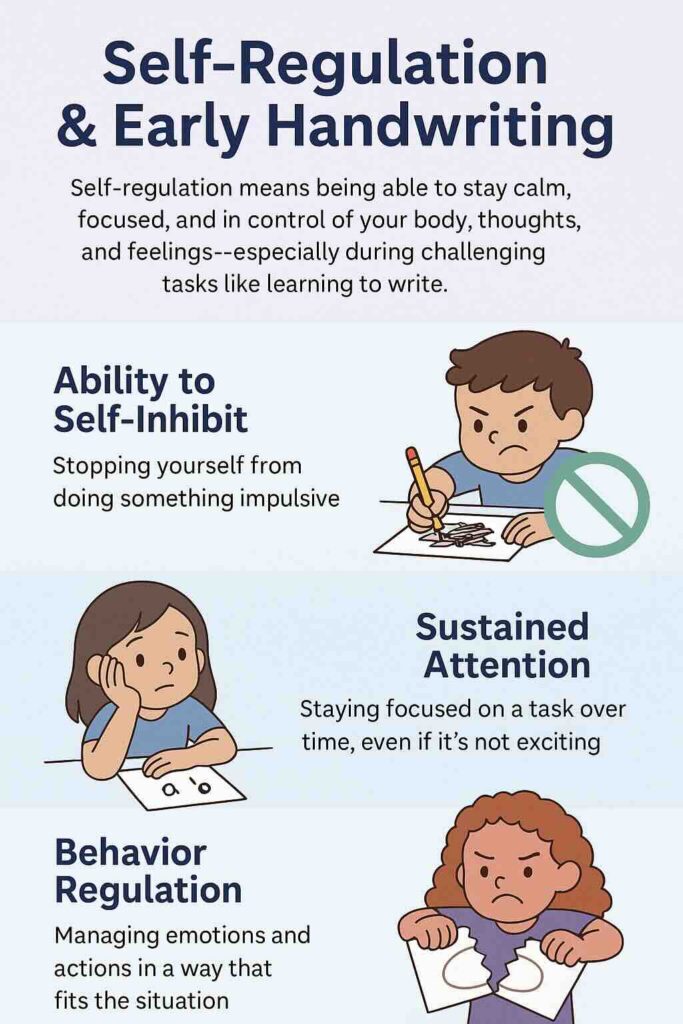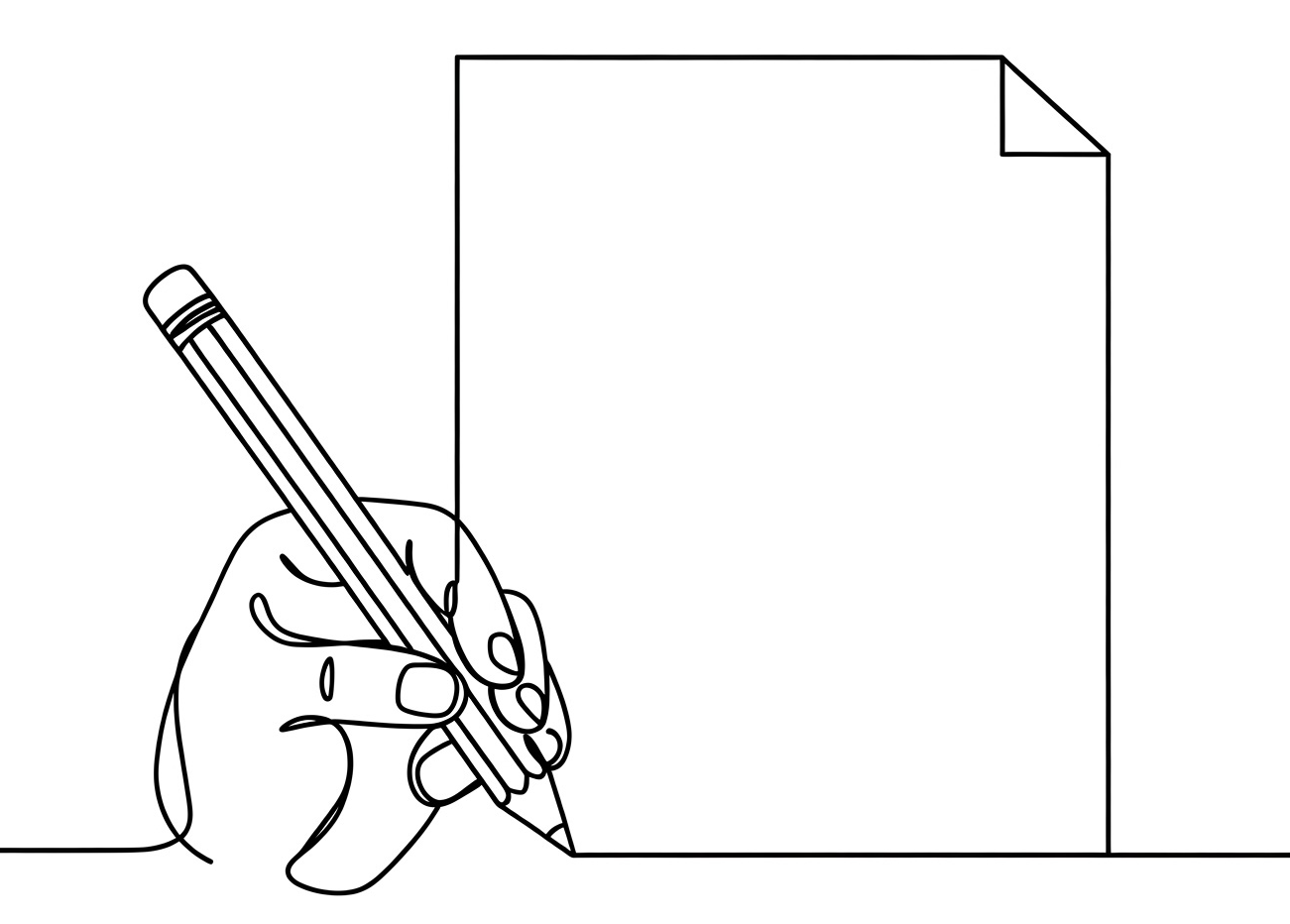Self Regulation

Self-Regulation & Handwriting
Self-regulation means being able to stay calm, focused, and in control of your body, thoughts, and feelings—especially during challenging tasks like learning to write.
Writing takes a lot of patience and focus. For some children, it can feel frustrating, boring, or confusing. When self-regulation is still developing, children may rush, give up, scribble, or even avoid writing altogether.
Here’s how specific self-regulation skills impact early handwriting:
Ability to Self-Inhibit
- What it means: Stopping yourself from doing something impulsive.
- Handwriting example: A child may suddenly scribble on their paper, press the pencil too hard, switch tasks before finishing, or blurt out, “I don’t want to do this!†instead of trying.
- They may also start writing before thinking or skip directions entirely.
Sustained Attention
- What it means: Staying focused on a task over time, even if it’s not exciting.
- Handwriting example: The child may write one or two letters and then get distracted by something else—like the window or a nearby sound.
- They might only finish half a sentence or need many reminders to keep going. Their writing may start off neat and then quickly become sloppy or rushed.
Behavior Regulation
- What it means: Managing emotions and actions in a way that fits the situation.
- Handwriting example: A child may get upset when they make a mistake, crumple their paper, cry, or walk away. Others may move too much in their seat, talk non-stop, or poke their neighbor while writing.
- Children with strong behavior regulation can pause, ask for help, or calmly try again when writing is hard.

